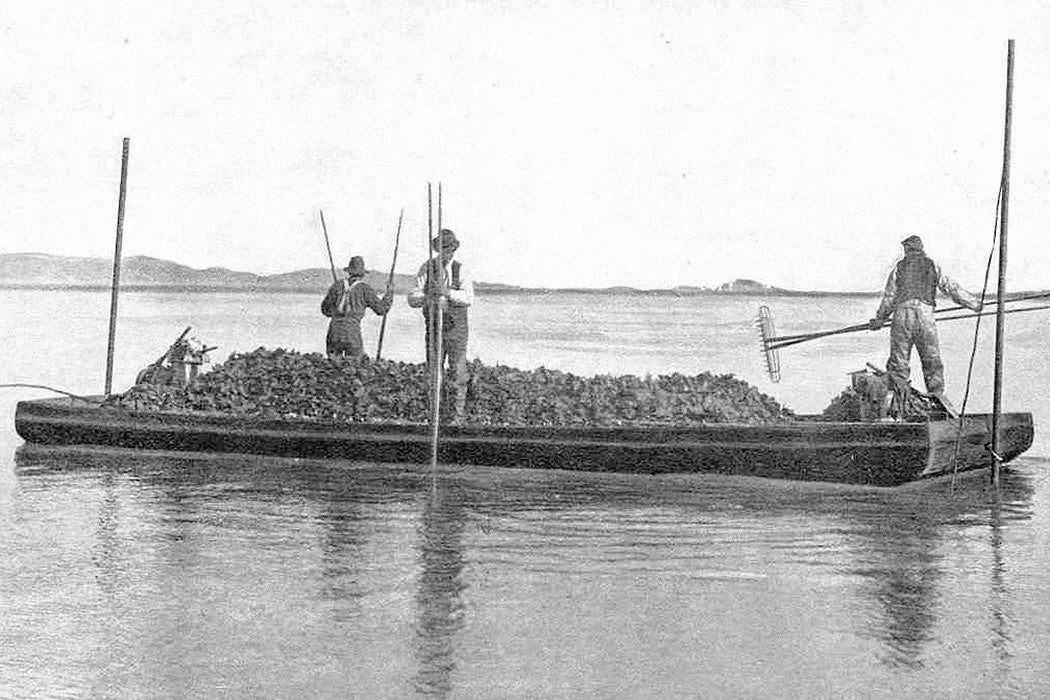At the start of the twentieth century, there were pirates operating in the San Francisco Bay: oyster pirates. Shellfish had been part of the Indigenous economy before the arrival of European settlers, but commercial oyster farming had become a big industry by the late 1800s. Commercial oyster beds were valuable, and pirates visited by night to steal the oysters in them.
Meanwhile the oyster bed owners had paid for the land and to seed the beds (with East Coast oysters), so they were losing expensive property. It was a challenge for law enforcement, because a purloined oyster looked the same one that had grown on an abandoned bed and was free for anyone to take.
As historian Matthew Morse Booker asks in the Pacific Historical Review, “At stake were persistent questions in American history: Who should have access to natural resources? To whom did the bay belong?”

Once a key element in Native economies of the region, clams and oysters were a reliable source of free protein for working-class and poor urban dwellers. But the arrival of commercial industry blocked private use of theoretically communal resources. And the oysters illustrated a bigger historical issue, beyond the San Francisco Bay. As Booker explains, “Everywhere in the industrializing nineteenth-century world, poor people lost access to traditional common lands and the products they had gathered there. This loss was contested.”
In California, it was not just industrialization that was changing the culture of the tidelands. Mexican law and American law (standing on English legal traditions) differed on whether tidal areas were “commons” or could be privately owned. When California became part of the United States, the shift to private ownership of land along the waterfront criminalized traditional use and foraging of natural resources.
But shellfish would face a greater challenge: the Bay’s increasing pollution. A growing city, with multiple industries all affecting the waterways, left the shellfish population diminished and the survivors toxic.
Weekly Newsletter
“By the 1920s the oyster industry was dying, and no one has sold or stolen a San Francisco Bay oyster since 1956,” Booker writes.
The story has a strange coda however: the native oyster—long sidelined for the introduced species—has somehow hung on, in small numbers. Too full of heavy metals to be edible now, its population is still rebounding in the Bay. So there may be a future for oysters in San Francisco yet.







